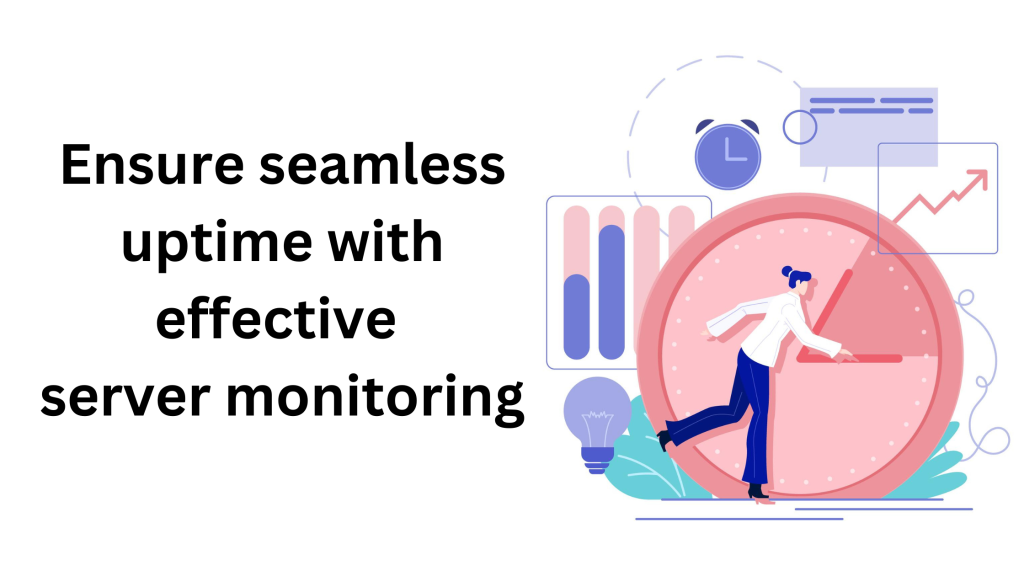
How to Monitor Server Uptime Effectively
Ensuring high server uptime is crucial for maintaining seamless digital operations. Whether you’re managing a website, application, or infrastructure, learning how to monitor server uptime effectively can help you detect issues early and minimize downtime. In this tutorial, we’ll explore the key steps, tools, and best practices to monitor server uptime.
Why Uptime Monitoring Matters
In today’s digital age, server uptime is critical to business success. Prolonged downtime not only affects revenue but also damages customer trust and brand reputation. Learning how to monitor server uptime effectively helps ensure that your website, applications, and infrastructure remain available around the clock.
This guide will walk you through the essential steps, best tools, and key practices for effective uptime monitoring.
What Does Monitoring Server Uptime Mean?
Server uptime monitoring involves tracking the availability and performance of servers to ensure uninterrupted service. By using specialized tools, IT teams can detect potential issues early and resolve them before they impact end users.
Step 1: Choose the Right Uptime Monitoring Tool
Choose the Right Uptime Monitoring Tool
Selecting the right tool is foundational to effective uptime monitoring. Here are some popular options:
- Xitoring: Provides real-time monitoring, customizable alerts, and detailed performance metrics.
- Pingdom: A user-friendly tool with advanced synthetic monitoring capabilities.
- UptimeRobot: Affordable and reliable with free uptime checks every five minutes.
- Better Stack: Combines uptime monitoring with incident management and log analysis.
- Uptime.com: Offers comprehensive monitoring solutions, including API and real user monitoring.
When choosing a tool, consider factors like reporting capabilities, ease of integration, and alert customization.
Step 2: Set Up Real-Time Alerts
Set Up Real-Time Alerts
Timely notifications are essential for mitigating downtime. Real-time alerts allow IT teams to respond immediately to potential issues. Most monitoring tools support multiple channels for alerts, such as:
- SMS
- Slack or Microsoft Teams integrations
Customizable thresholds for triggers (e.g., high latency, error rates) ensure that alerts are both actionable and relevant.
Step 3: Monitor Key Metrics
Monitor Key Metrics
For effective server uptime monitoring, focus on these core metrics:
- Uptime Percentage: Measures server availability over a specified period. Aim for 99.99% or higher.
- Response Time: Indicates how quickly your server responds to requests, affecting user experience.
- Error Rate: Tracks the frequency of HTTP errors, which can signal performance issues.
- Latency: Measures delays in server response time, particularly crucial for real-time applications.
These metrics provide insights into your server’s health and performance, enabling proactive problem-solving.
Step 4: Analyze Reports and Logs
Analyze Reports and Logs
Detailed reports and error logs are invaluable for identifying recurring issues. Tools like Xitoring and Better Stack offer performance dashboards that highlight trends, making it easier to spot vulnerabilities.
Analyze these reports regularly to:
- Identify performance bottlenecks.
- Plan infrastructure upgrades.
- Ensure compliance with service-level agreements (SLAs).
Step 5: Conduct Regular Maintenance
Conduct Regular Maintenance
Preventive maintenance minimizes the risk of unplanned outages. Use your monitoring tool’s data to schedule tasks like:
- Server software updates
- Hardware inspections
- Database optimization
- Backup and disaster recovery tests
Regular maintenance helps maintain system health and extends the lifespan of your infrastructure.
Best Practices for Uptime Monitoring
Best Practices for Uptime Monitoring
- Define Clear Objectives: Set uptime targets, such as achieving 99.99% availability.
- Automate Monitoring: Use automation to streamline tasks like uptime checks and reporting.
- Test Failover Systems: Ensure backup systems are operational and ready to take over during outages.
- Ensure Scalability: Select tools and infrastructure that can grow with your business.
Conclusion
Effectively monitoring server uptime is vital for maintaining a seamless digital presence. By leveraging the right tools, configuring real-time alerts, and adhering to best practices, businesses can minimize downtime, optimize performance, and enhance user satisfaction.